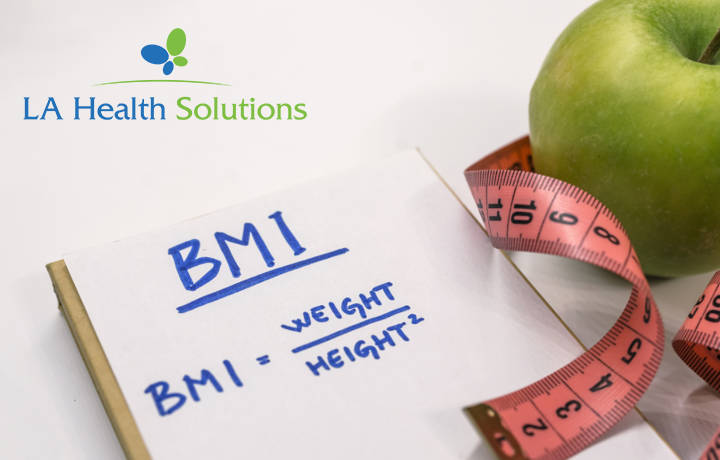Assessing Your Weight & Health Risk
There are so many trends when it comes to weight loss that include fad diets and exercise programs. The key to achieving and maintaining a healthy weight and reducing health risk is about a way of life or a lifestyle. Healthy eating, regular physical activity and a calorie balanced diet are all part of that healthy lifestyle. Managing your weight is one part of reducing health risks. There are many ways to assess weight and health risks, but three key measures include the Body Mass Index (BMI), Waist Circumference, and Risk Factors For Disease and Conditions associated with obesity.
What Is Body Mass Index (BMI)?
In short, Body Mass Index is a person’s weight in kilograms divided by the square of height in meters. BMI is a useful tool that estimates a person’s approximate body fat. It is a gauge for a person’s risk for disease. The higher the BMI, the higher the risk for certain diseases such as heart disease, high blood pressure, type 2 diabetes, gallstones, breathing problems, and certain cancers. Although BMI is a great tool, it may overestimate body fat in athletes or individuals with a muscular build and may underestimate body fat in older persons or those who have lost muscle mass.
The BMI Score Means The Following:
Underweight – BMI Below 18.5
Normal – BMI 18.5-24.9
Overweight – BMI 25.0-29.9
Obesity – BMU 30.0 and Above
Obesity Risk Factors:
High blood pressure (hypertension)
High LDL cholesterol (“bad” cholesterol)
Low HDL cholesterol (“good” cholesterol)
High triglycerides
High blood glucose (sugar)
Family history of premature heart disease
Physical inactivity
Cigarette smoking
Waist Circumference
Measuring the waist circumference helps to screen for possible health risks that can come with being overweight. If most of the fat is around your waist and not your hips, the risk for heart disease and type 2 diabetes increases. The risk increases with a waist size great than 35 inches for a woman and 40 inches for men. To correctly measure your waist, stand and place a tape measure around your middle, just above your hipbones. Measure your waist just after you breathe out.
Risk Factors
Risk factors include: High blood pressure (hypertension), High LDL cholesterol (“bad” cholesterol), Low HDL cholesterol (“good” cholesterol), High triglycerides, High blood glucose (sugar), Family history of premature heart disease, Physical inactivity and Cigarette smoking. For individuals who are considered obese (with a BMI great than or equal to 30) or those who are overweight (BMI of 25-29.9) and have two or more risk factors, it is highly recommended to lose weight. Just a small weight loss of 5-10 percent of your weight will help lower your risk for developing diseases associated with obesity. Take a moment to talk with your doctor to evaluate your increase risks if your are overweight. Just remember, even a small weight loss can have a huge impact on your health risks.

